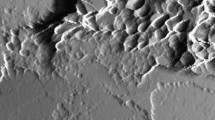Summary
Influenced by a chain of mechanisms the time course of incorporated radioactive alkaline earths in bone is determined by the slowest link. This is given by the exchange of the anorganic crystals of bone with the surrounding solution.
Using a suspension of hydroxyapatite crystals there is tried to explain the power function as a mathematical description of retention of alkaline earths in bone in physical terms. It results from superimposing first order reactions caused by a distribution of binding energies of the ions to the crystal surface.
Zusammenfassung
Das zeitliche Verhalten inkorporierter radioaktiver Erdalkalien im Knochen wird in einer Kette von Mechanismen durch das langsamste Glied bestimmt. Dieses ist durch den Austausch der anorganischen Knochenkristallite mit der umgebenden Lösung gegeben. An Hand einer Suspension von Hydroxylapatitkristalliten wird versucht, der Potenzfunktion als Retentionsfunktion der Erdalkalien im Knochen ein physikalisches Bild zugrunde zu legen. Sie ergibt sich aus einer Überlagerung von Reaktionen erster Ordnung infolge einer Verteilung von Bindungsenergien der Ionen an die Oberfläche der Kristallite.
Similar content being viewed by others
Literatur
Christiansen, J. A., u.A. Nielsen: Z. Elektroch.56 465, (1952).
Edginton, D. N.: Radiat. Res.25, 257 (1965).
Grimley, T. B.: Proc. roy. Soc. A201, 40 (1950).
Glasstone, S., K. Laidler, andH. Eyring: The theory of rate processes, p. 181, 347. New York and London: McGraw Hill Book Company 1941.
Holtzmann, R. B.: Radiat. Res.25, 277 (1965).
Johnson, R. A., andJ. D. O'Rourke: J. Amer. chem. Soc.76, 2124 (1954).
Marshall, J. H.: J. theor. Biol.6, 386 (1964).
J. H. Marshall, and R. E.Rowland: Argonne National Laboratory, Rad. Phys. Div., Report ANL- 5919, 35 (1958).
Neumann, W. F., andM. W. Neumann: The chemical dynamics of bone mineral. Chicago: The Univ. of Chic. Press 1958.
Norris, W. P., S. A. Tyler, andA. M. Brues: Science128, 456 (1958).
Reynolds, J. C.: Siehe 8. ANL-5967, 81 (1958).
Stark, G.: Dissertation. Math.-Naturwiss. Fakultät der Univ. d. Saarlandes, Saarbrücken 1967.
Author information
Authors and Affiliations
Additional information
Teil I der Arbeit s. Biophysik5, 42 (1968).
Rights and permissions
About this article
Cite this article
Stark, G. Untersuchungen an synthetischem Hydroxylapatit im Hinblick auf den Knochenstoffwechsel von Calcium, Strontium, Barium und Radium. Biophysik 5, 55–65 (1968). https://doi.org/10.1007/BF01388132
Received:
Issue Date:
DOI: https://doi.org/10.1007/BF01388132



